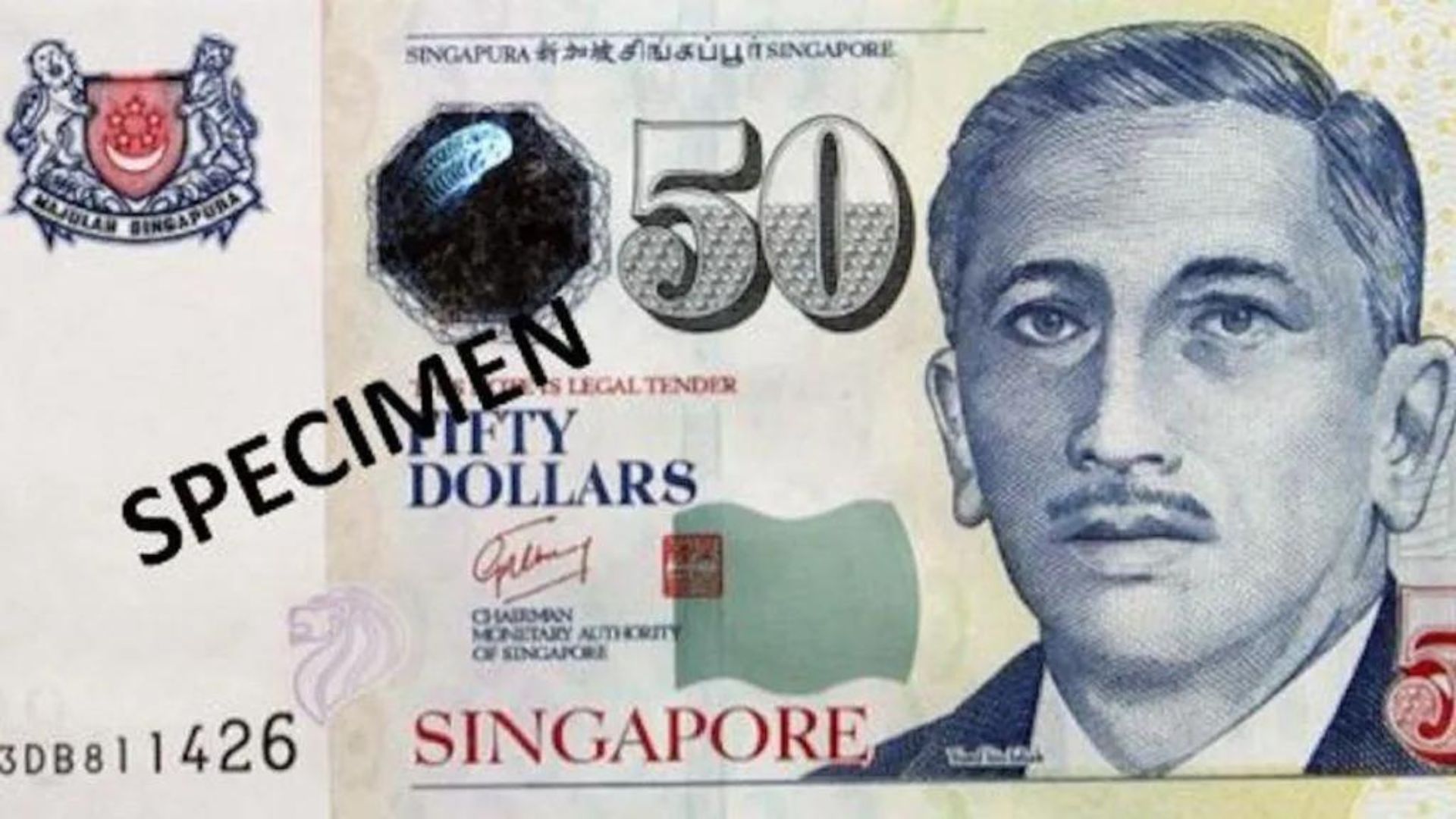
One of the strongest currencies in the world, the Singapore dollar (SGD) is the 13th most traded currency in the foreign exchange market, accounting for around 1.8 per cent of daily forex trades, according to CMC Markets, a UK-based financial services company.
On May 15 2023, the Monetary Authority of Singapore (MAS) launched a new SGD 10 coin in honour of the 100th birth anniversary of the late founding father of Singapore, Lee Kuan Yew. However, this is not the first time that the country has unveiled a commemorative currency. There have been several occasions in the past when the island country has done so.
Here are some intriguing facts about the Singapore currency
Made from polymer
The official communication platform and repository of the Singapore Government state that the Board of Commissioners of Currency Singapore (BCCS) was set up in 1967 with the enactment of the Currency Act. With this, Singapore started producing its own currency.
In August 1990, the BCCS started issuing Singapore dollar (SGD) polymer notes instead of paper. The first was an SGD 50 note to commemorate the nation’s 25 years of independence. These polymer notes are produced from non-commercial polypropylene plastic, which is extracted from petroleum.
It is initially created as a clear plastic film, using special, patented production techniques. This is followed by coating it with several materials. It is on this coating that the other elements of the note are printed later, including a range of distinct security features.
Polymer notes have better shelf life than those made of paper even if handled roughly. Also, security features, such as the Complex Clear Window and Embossed Clear Window, are very specific to the technology.
A rectangular coin
Coins are usually circular, but Singapore has rectangular coins, too. According to the MAS, Singapore’s first rectangular coin was issued in 2010 to commemorate the city-state’s 45 years of independence — an SGD 5 silver-proof colour coin.
Previously issued by the BCCS
The BCCS continued to issue Singapore dollar notes for 35 years, since 1967. In 2002, it merged with the MAS.
The SGD 10 polymer Portrait Series note was the first official note released by the MAS when both organisations merged. It was overprinted with the words ‘Commemorative First Note Issue & MAS logo’ and had the prefix ‘MAS.’
Discontinued printing of SGD 1,000 and SGD 10,000 notes

In 2014 and 2021, the MAS discontinued printing high denomination notes of SGD 10,000 and SGD 1,000, respectively. This was done as a preventative move to lessen the risk of money laundering and terrorist financing that is associated with bigger denomination notes.
However, Singapore accepts the existing SGD 10,000 and SGD 1,000 notes in circulation as legal tender, as they haven’t been banned from use.
KINEGRAM COLORS security feature
The Singapore Bicentennial note’s distinctive security feature, which uses KINEGRAM COLORS® technology with the FLUX effect, was presented with the Best Applied Security Product award at the 2019 Excellence in Holography Awards.
The first note carrying the feature was commemorated on 5 June 2019 by President Halimah Yacob, and it was done for the SGD 20 note. It illustrates Singapore’s journey to becoming a nation and pays homage to ancestors who laid the groundwork for contemporary Singapore.
Braille code
Singapore dollar notes can be easily used by people who are visually challenged. They feature dots, which help in identifying the denomination of the currency, at the top right corner. This is the Braille code printed using heavy Intaglio ink.
Secret micro text

Singapore dollar notes have a secret micro text on the front which reads ‘MONETARY AUTHORITY OF SINGAPORE.’ Known as Intaglio micro text, this is part of the security feature which people cannot see with the naked eye.
Additionally, the text ‘MAJULAH SINGAPURA’ appears as a continuous pattern on the back of the notes when viewed using a magnifying glass. This is referred to as an Offset micro text.
The text ‘MAS’ can also be seen in the shadow of the denomination numeral when magnified. This is known as Reverse Intaglio micro text.
Singapore dollar and Brunei dollar are used interchangeably
On 12 June 1967, Brunei, Malaysia and Singapore formed a free currency exchange pact in order to improve economic and commercial ties.
Although Malaysia terminated the agreement in 1973, Singapore and Brunei did not. Hence, the Singapore dollar continues to be accepted as legal tender in both countries, and the same applies to the Brunei dollar.
Sovereign credit rating
The city-state holds the highest rating of AAA for long-term financial stability by the Fitch rating system, which Singapore shares with only 10 other nations.
According to Fitch Ratings, the Singapore dollar has “exceptionally strong external and fiscal balance sheets, high income per capita, sound macroeconomic policy framework and strong business environment.” This makes it a safe place for investors to park their investments.
Not a Fiat currency
Currencies that are not backed by tangible commodities like gold, silver or other metal but retain their purchasing power by an agreement on their value are known as Fiat currency.
SGD is not a Fiat currency as in today’s scenario, over SGD 30 billion is entirely backed by gold, silver or other assets that the Monetary Authority owns, as per the Corporate Financial Institute (CFI), which has its headquarters in Canada.
This story first appeared here.
(Hero and featured Image Credit: Don’s World Coin Gallery/ CC BY-SA 3.0/Wikimedia Commons)











